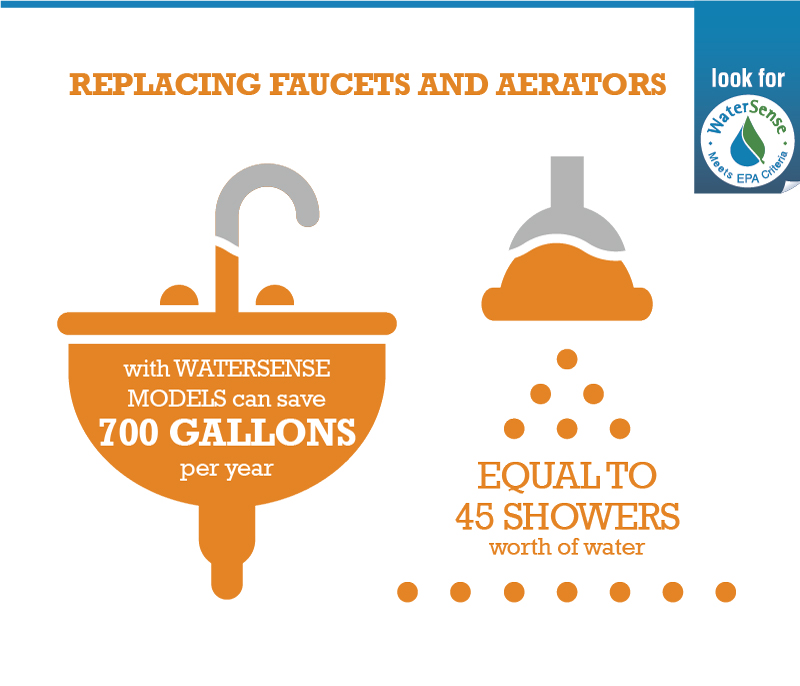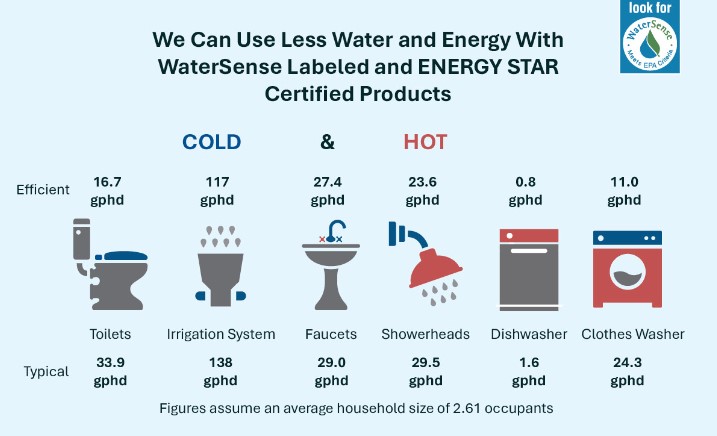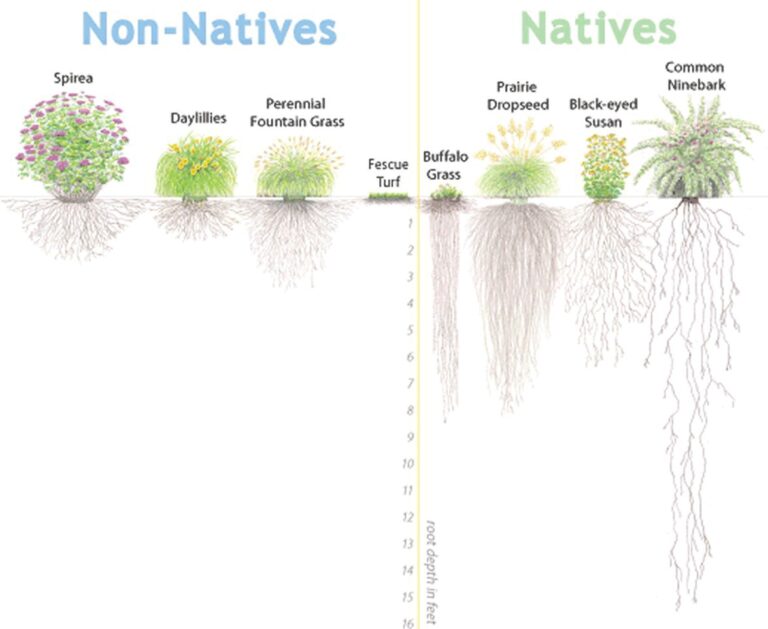Written by Lacie Wever, HRSD Community Education and Outreach Specialist Published on June 18, 2025
If you’re wondering how to reduce your water bills this summer, this post is for you!
Whether you get two separate bills (Locality Utilities and HRSD) or one combined bill (HRUBS), you’re paying for two essential services:
- Your locality water bill, which covers clean water coming to your faucet.
- Your HRSD wastewater bill, which handles the used water leaving your home through toilets, drains, and showers. This water is cleaned before it is returned to the environment.
Even though these bills are inevitable, the good news is that you have more control over these costs than you might think.
Try these 15 simple ways to use less water and lower your bill!
-
Fix Leaks ASAP
Did you know the average household loses over 10,000 gallons a year to leaks. That’s money down the drain, literally! To help save water and lower your water bill, regularly check faucets, toilets, hoses, and irrigation systems for leaks.
-
Install Low-Flow Fixtures (Upgrade Your Aerators)

If you’re looking for an effortless way to reduce your water and wastewater bills, just look for the WaterSense label! WaterSense labeled bathroom sink faucets can reduce a sink’s water flow by 30% or more (Environmental Protection Agency). This is because the aerators restrict flow rates, helping to increase water conservation.
If you’re looking for a more cost-effective way to make your faucets low flow, consider simply upgrading your aerators!
Low-flow toilets are another water-saving upgrade. Low-flow toilets typically cost more than traditional toilets, but they save you money in the long run! Consider this: toilets manufactured before 1995 use 5 gallons per flush, toilets made after 1995 use no more than 1.6 gallons per flush, low-flow toilets use no more than 1.3 gallons per flush (U.S. Department of Energy).
-
Upgrade to Efficient Appliances
 When replacing appliances, look for the ENERGY STAR label. Appliances with an ENERGY STAR label must meet a specific criterion determined by the Environmental Protection Agency. ENERGY STAR washing machines, for example, use about 30% less water and 50% less energy than conventional models. It’s an investment that pays off overtime (U.S. Department of Energy)!
When replacing appliances, look for the ENERGY STAR label. Appliances with an ENERGY STAR label must meet a specific criterion determined by the Environmental Protection Agency. ENERGY STAR washing machines, for example, use about 30% less water and 50% less energy than conventional models. It’s an investment that pays off overtime (U.S. Department of Energy)!
-
Take Shorter Showers
Showers use more water than you might expect. The average shower uses more than 16 gallons of water (EPA WaterSense). Cutting back even one or two minutes can significantly reduce both your water and wastewater usage. Try this EPA activity to see how much you can save by trimming down your shower time.
-
Turn Off the Faucet
Leaving the water running while brushing your teeth or washing dishes is an easy habit to break. According to the EPA, breaking this habit could also save you up to 200 gallons per year!
-
Use the Dishwasher
Yes, use the dishwasher, really! Contrary to popular belief, using a dishwasher typically uses less water than handwashing, especially when you run it with full loads. Dishwashers are designed to use a consistent and efficient amount of water and detergent.
-
Use a Rain Barrel
Rain barrels not only help to reduce stormwater runoff but also help to reduce your water and wastewater bill. Rain barrels are used to capture rainwater and can be reused to water your plants.
Check out this step by step guide to build your own rain barrel!
-
Water Early or Late

If you’re watering your lawn or garden, aim for early morning or evening. Watering during cooler times of the day reduces evaporation and helps ensure water actually reaches your plant’s roots.
-
Use a Broom Instead of a Hose
When cleaning off patios, sidewalks, or driveways, swap out the hose for a broom. You’ll save gallons of water with each use and still get things just as clean!
-
Use a Pool Cover
Pool owners, take note: a simple cover can prevent water loss due to evaporation. If you think back to the water cycle, you’ll remember the sun heats up water which causes evaporation. The same phenomenon takes place with your uncovered pool! According to the Environmental Protection Agency, using a pool cover can prevent up to 95% of pool water evaporation!
-
Only Wash Full Loads of Laundry
It takes the same amount of water to wash a half load as a full one. Combine smaller loads and wait until you have a full load to wash. This simple habit can save more than 1,600 gallons of water per year. This is roughly equivalent to 100 showers! (EPA Water Sense).
-
Plant Native Species

Native plants are adapted to the local climate and soil, which means they require less water, fertilizer, and maintenance. They’re also better at managing stormwater runoff and can help filter pollutants naturally.
-
Avoid Overwatering
It’s easy to overdo it when watering plants! To avoid waste:
- Add compost to your soil to retain moisture
- Use mulch in garden beds
- Consider installing an irrigation system
- Choose drought-tolerant plant varieties
-
Rethink Car Washing

Being more mindful about car washing is a great way to reduce your water and wastewater bill! This can also help reduce runoff and pollutants into the storm drain and directly into our waterways.
For a more controlled amount of water for car washing, use a bucket and a hose nozzle with controlled flow restriction.
To eliminate water and wastewater charges for car washes altogether, use a commercial car wash! These car washes have to use a set amount of water and product, and have stormwater practices in place to reduce water pollution.
-
Educate Your Household
The more your household knows, the more effective these tips become! Webites like askHRgreen.org and EPA Water Sense have so many resources to learn more about how to reduce your water and wastewater bills.
Reducing your water and wastewater consumption can start by just making a few thoughtful changes to your routine. These simple tips can help you save money, conserve water, and contribute to a more sustainable future.
WATER you waiting for?